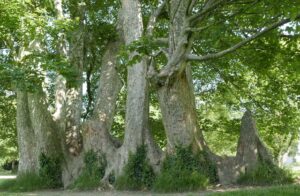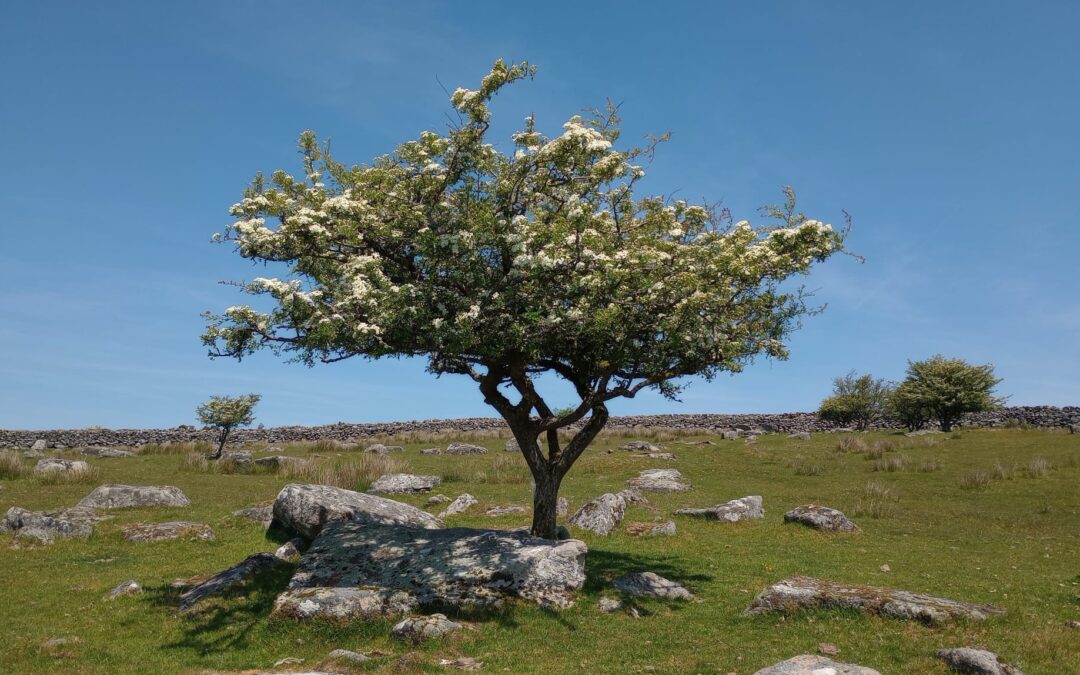It’s National Tree Week (November 25 – December 3).
This year marks the 50th anniversary of the ‘Plant a Tree in 73’ campaign – from which The Tree Council was born.
To pay tribute to those foundations, and echo the well-loved slogan half a century later, The Tree Council wants as many people as possible to have the opportunity to
‘Grow a Tree in 23’ so visit their website to find out more at treecouncil.org.uk/seasonal-campaigns/national-tree-week/
The crucial change in the wording – ‘grow’ instead of ‘plant’ – reflects the continued care trees need after planting to ensure they thrive, to become the carbon-guzzling, wildlife supporting, wellbeing enhancing, mature specimens that deliver so many benefits in our urban and rural environments.
And here at the Trust, we are fully supportive of growing the ‘right tree for the right place’ through the various tree-related activities we deliver via projects such as Woodlands for Water.
So far this year, we have been busy with England Woodland Creation Offer (EWCO) projects and larger plans via the Woodland Creation Planning Grant. Many of these are riparian schemes and will have significant benefits to catchments including the Tamar, Exe, Taw and Torridge.
There is growing interest among farmers and landowners. This planting season (2023/2024), three EWCO schemes will be delivered, with approx. 7,600 trees / shrubs to be planted over at total area of 4.5ha. In the next planting season (2024/2025), we are estimating for 50+ha, so a ten-fold increase!
The team has also promoted our tree-related activities at various conferences and events this year, including the Agroforestry Show.
Favourite trees
Below, a few of the team share their favourite trees and why. Let us know in the comments what yours are.
Favourite tree: Willow
Why: “They like being near water! They are resilient, regrowing when cut back and symbolise renewal. They have healing properties, can be used for building, baskets, cricket bats, rope and more. Plus, willow spiling is a traditional way to stabilise a riverbank. And they look lovely too.”
Favourite tree: Hawthorn (Jenny’s fab photo above shows off this delightful tree).
Why: “I love hawthorn! Especially the windswept and gnarled hawthorn on Dartmoor which have been shaped by the wind as they grow. They are small but mighty, and provide food and shelter for birds and small mammals. They have beautiful blossom in the spring and festive berries in the winter.”
Favourite tree: Rowan/ Mountain Ash
Why: “It looks beautiful all-year round, but especially with its orange-red berries that stand out during the darker winter months. It’s also steeped in folklore which I find really interesting. There is a lot that can be learned from nature, history and local legends.”
Favourite tree: Too many to choose from…
Why: “to have one as a favourite. But certainly one of the most notable trees I have cared for is the Sycamore in the car park at Saltram House in Plymouth. This Acer pseudoplanatus is a multi stemmed Acer that was likely part of a historic hedgerow and may have fallen and phoenixed or been intentionally layered to create a stock proof field boundary giving it a distinctive and notable form.
This Acer pseudoplanatus is a multi stemmed Acer that was likely part of a historic hedgerow and may have fallen and phoenixed or been intentionally layered to create a stock proof field boundary giving it a distinctive and notable form.
Now it sits in the middle of a busy car park and while a great play feature for children and shade for picnickers it still offers much to nature as a roost for birds, bats and home to various fungi and invertebrates.
Favourite tree: Sweet Chestnut (Castenea sativa)
Why: “When grown as a mature parkland tree, the bark ridges swirl around the trunk in a lovely spiral, and the crown spreads right out in a sheltering dome. The nuts taste amazing roasted in the autumn, although extracting them from their shells needs gloves! They can also be coppiced for durable building and fencing materials. They grow very well in the south west and contribute to the resilience of our woodland communities.”
Favourite tree: Sessile oak.
Why: “For me the greatest tree in the UK has to be the sessile oak. These trees out live humans, witness historic changes through the centuries whilst their structure evolves from fragile acorn sapling to magnificent specimen enriching the landscape. As if that wasn’t enough, every year they support the short and longer lives of over 2,300 other wildlife species.”
Favourite tree: Hawthorn.
Why: “I love seeing hawthorn dotted across Cornwall. I love the way that they all look windswept on the top of hills in winter. I love the fact that in Spring you can eat the fresh leaves as ‘bread and cheese’, and that come May the hedgerows and fields are covered in bursts of white blossom.
Favourite tree: It’s difficult as I have many favourites.
Why: “If I had to pick one, it would no doubt be the magnificent English Oak. This hardwood tree has been pivotal for life for thousands of years, providing everything from stable firewood to constructing ships and buildings. The unique trunk, gnarled branches and canopy can support up to an incredible 2300 wildlife species through food and shelter, making it the most ecologically diverse tree in the UK.”
Favourite tree: Cedar (Cedrus libani)
Why: “This is my favourite tree because of its sheer size and presence in any British landscape. Cedar was thought to represent purification and protection and represents incorruptibility and eternal life. It has been used all over the world for a range of different purposes and planted in nearly every stately home in the UK from the 1740s onwards.”
Favourite tree: Copper Beech.
Why: “As a child it was always the tree in the Tavistock Meadows that I would climb because it was so very big and I liked to go so very high. You were also really hidden in the dark leaves and could vanish from the world. It was planted in the Duke of Bedford’s time and is over 200 years old. It’s seen the world change and has probably been climbed by plenty of children in that time. The Romans used beech trees to make paper and the word ‘Beech’ is synonymous with book and letter in the Old English, Germanic and Slavic languages. I have always been a devourer of books, so perhaps that is why I love the Copper Beech so much.”
Favourite tree: Old trees!
Why: “They are survivors! They are strong anchors around which entire ecosystems revolve. They provide longevity, resilience, genetic integrity, and they can give us a place to think, “said Pooh”. They clean our air, they remove carbon, they provide a home for thousands of creatures; and when they’re done living, they can continue to provide warmth through shelter and fuel. Wood is a lovely, warm, sustainable material and part of the natural cycle of life. My recommended Christmas read is The Man Who Planted Trees: Lost Groves, Champion Trees and an Urgent Plan to Save the Planet by Jim Robbins.”
Favourite tree: Elder (Sambucus nigra).
Why: “I find it fascinating because despite being a common species found in scrubland, hedges and low productive land in farms, it is an important tree in the English culture and folklore, but very little is known about its biology and ecology.
For example, it is not clear what pollinates the flowers. Some people say is the wind, others say that is bees, and some say that it has a symbiotic relationship with thrips. Elder has several uses as the flowers and berries are collected to prepare a variety of drinks, jams, medicinal syrups, and it is even used to make magic wands if you’re into that sort of thing!
Elder is also an important component of some woodland communities. It is palatable for livestock, and it has recently been used as the tree component of agroforestry systems due to its economic value and environmental potential to provide ecosystem services such as water retention during droughts. So many benefits that you ‘wood’ not believe it!”
Favourite tree: Beech
Why: “Although not native to the South West, beech woodland is a wonderful addition to the landscape where I live in East Devon and in the wider Blackdown hills.
I love the way this majestic tree changes colour through the seasons. It’s delightfully subtle lime green ‘newborn’ leaves illuminate early Spring, changing to that deep green of summer before becoming almost fluorescent yellow tinged with brown as autumn advances.
Shafts of sunlight through this lovely canopy create a wondrous scene on a crisp autumn morning!
The fact that many beeches then retain some of their rich brown leaves gives them a wonderful hue in winter sunshine. Early Spring in many beech woodlands is magical, with wood anemones and bluebells (preferably the English variety!) often carpeting the ground. As the relatively closed canopy subsequently develops, these woodlands become wonderfully cool havens on sultry summer days.”

